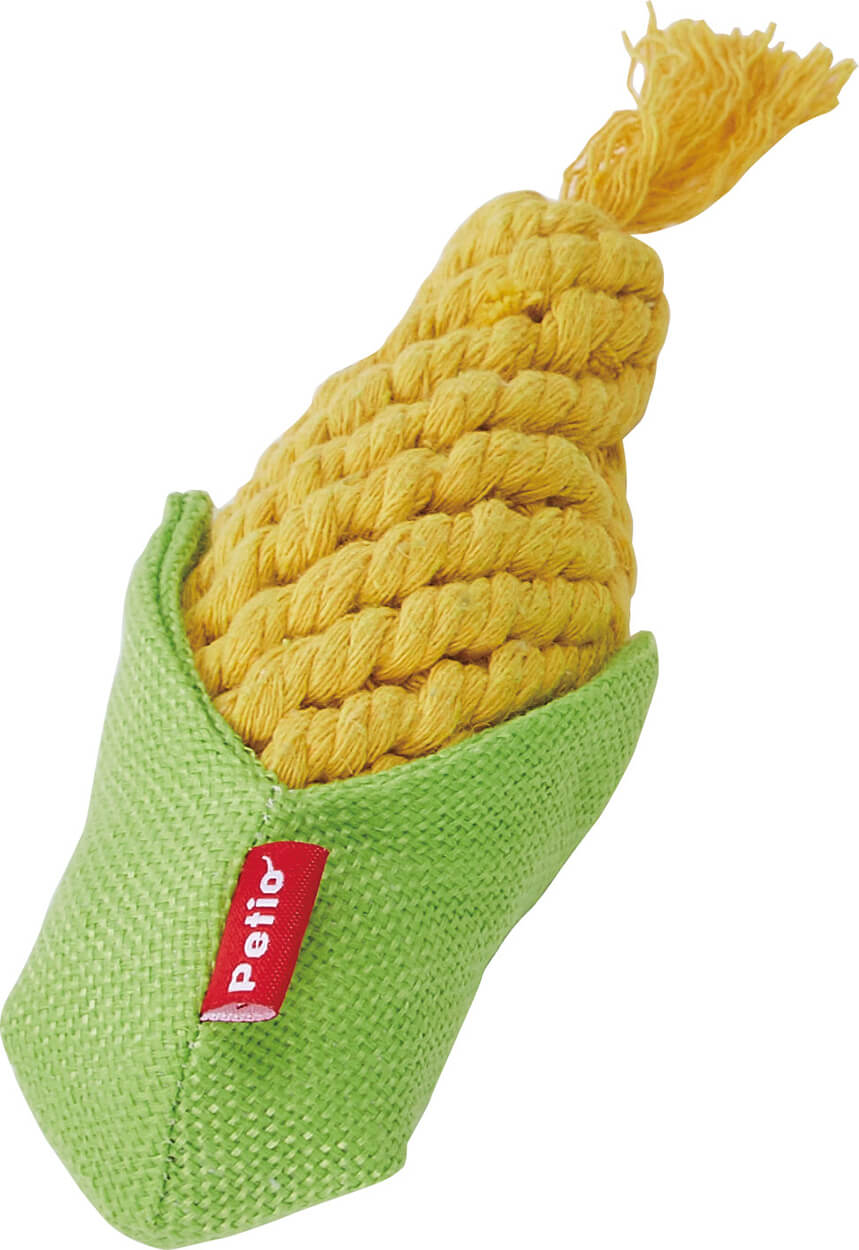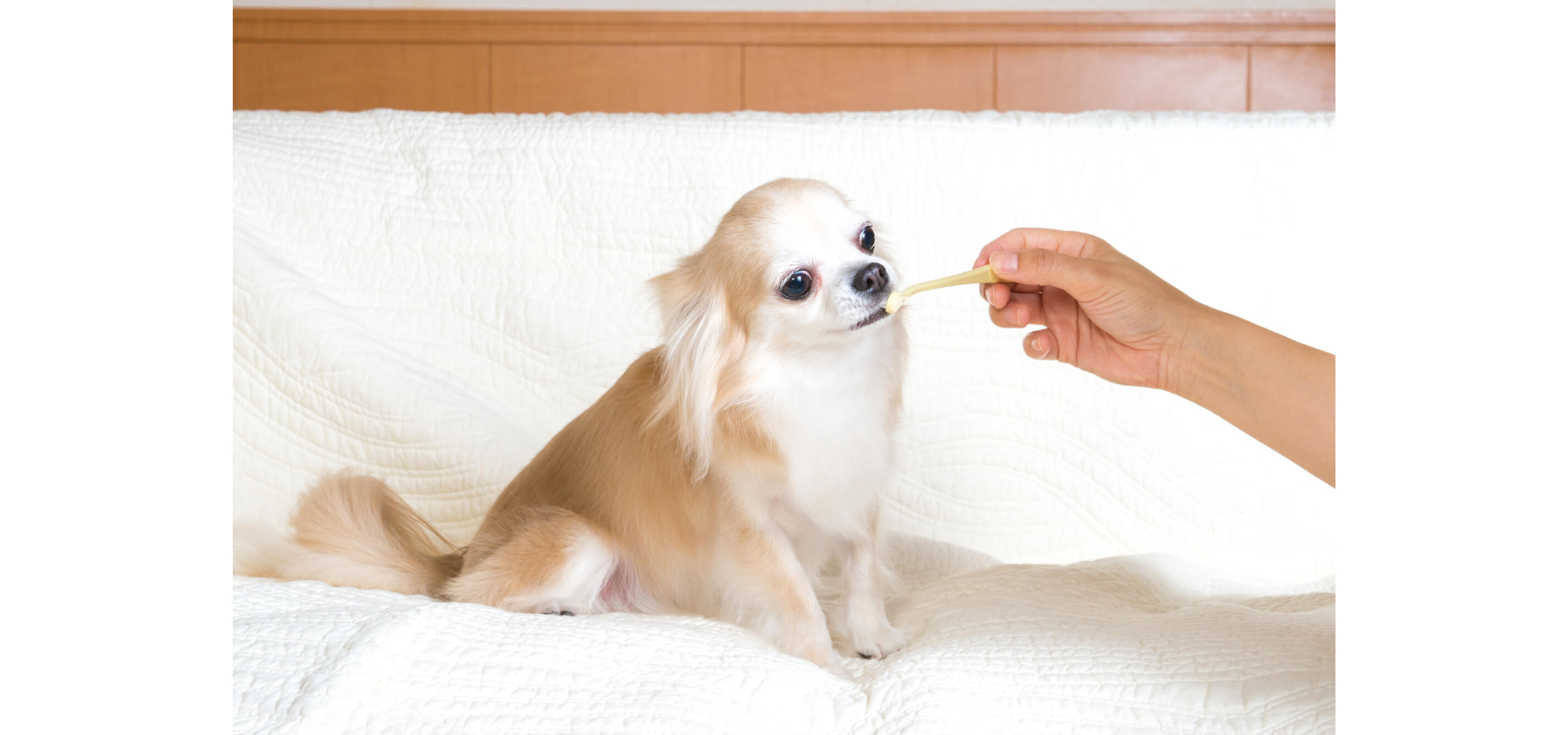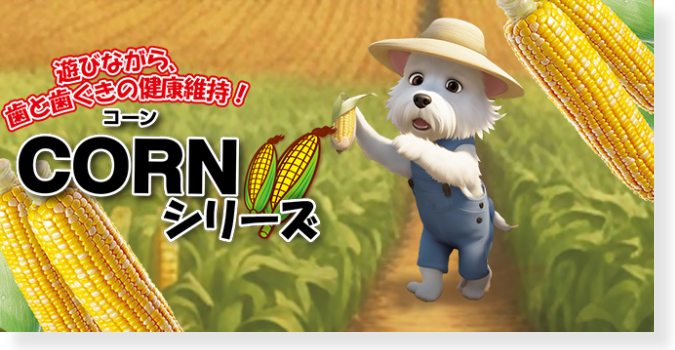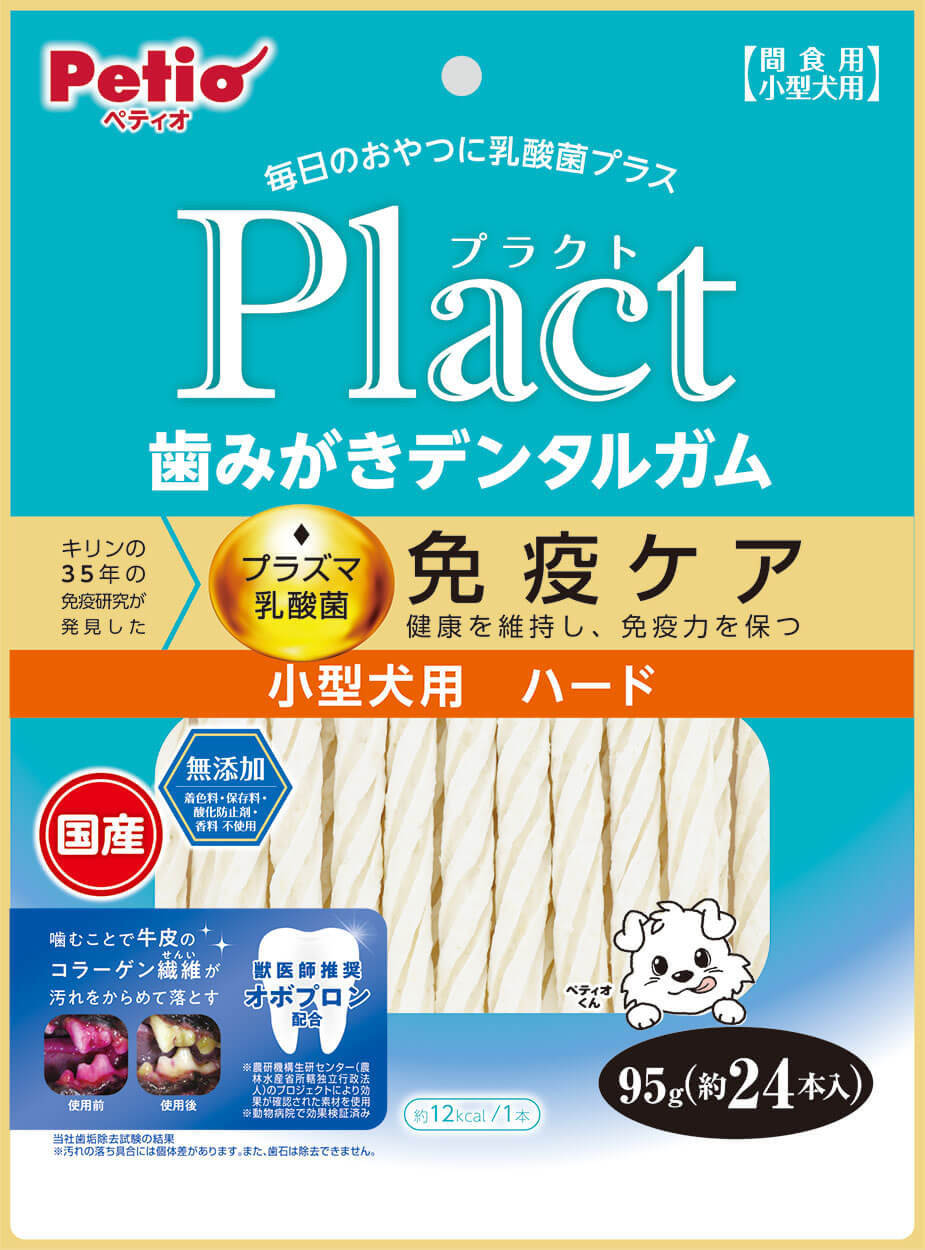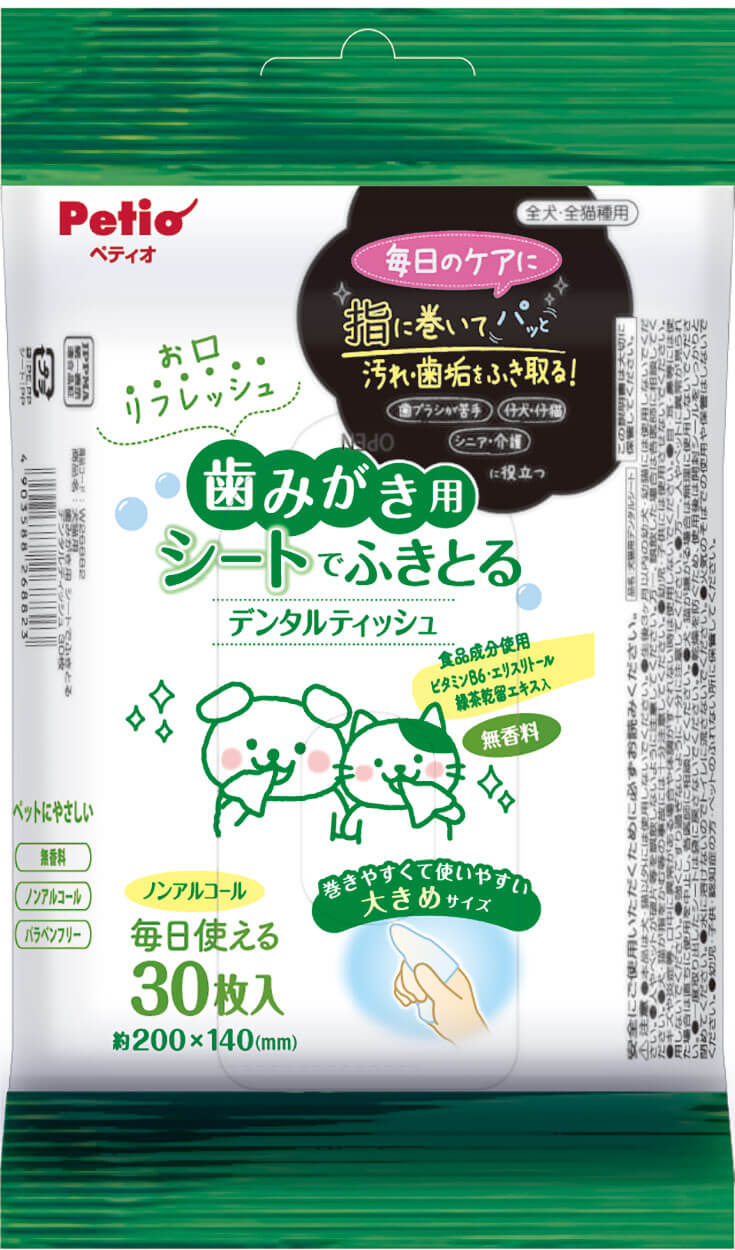Feature / Pickup
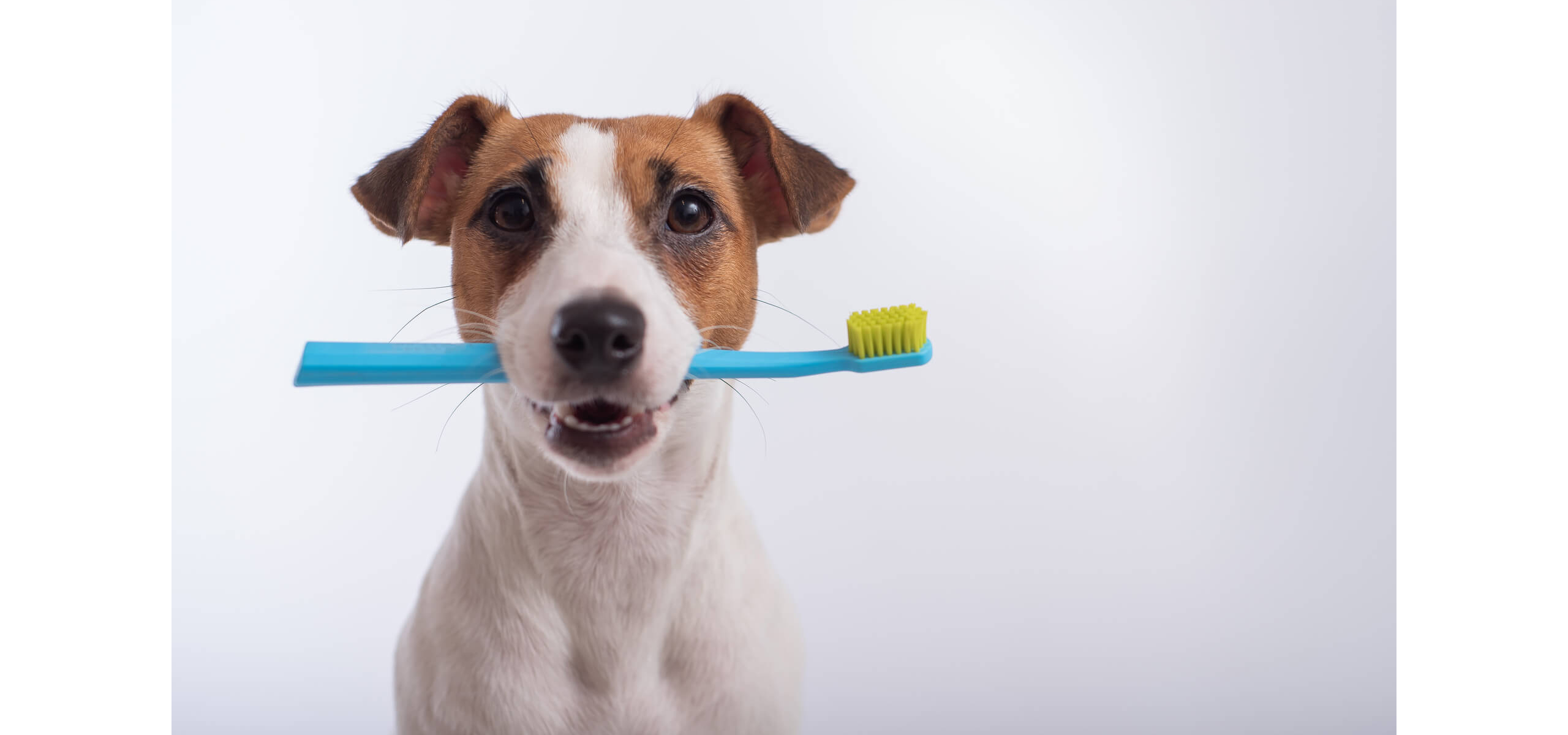
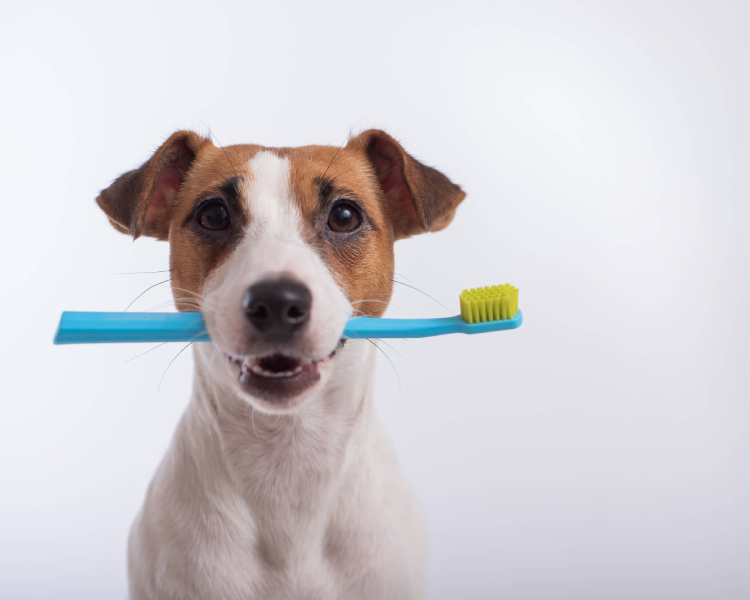
ここでは、ワンちゃんへの歯磨きの重要性や、健康を守るための歯磨きのやり方、知っておきたいポイントについて解説します。(最終更新日:2024年6月6日)


Supervision
3-918-9 Mukuya, Shimada City, Shizuoka Prefecture
Graduated from the Department of Veterinary Medicine, Faculty of Veterinary Medicine, Kitasato University. He is a part-time lecturer at the Renaissance Pet Academy, a vocational school, and a lecturer at the Japan Pet Massage Association and the Pet Medicinal Food International Association. Participated in rescue activities for animals affected by the Great East Japan Earthquake. In addition to general Western medicine, work on animal health through acupuncture and moxibustion treatment, Chinese medicine, pet massage, etc.
歯周病予防にはワンちゃんへの歯磨きが重要!
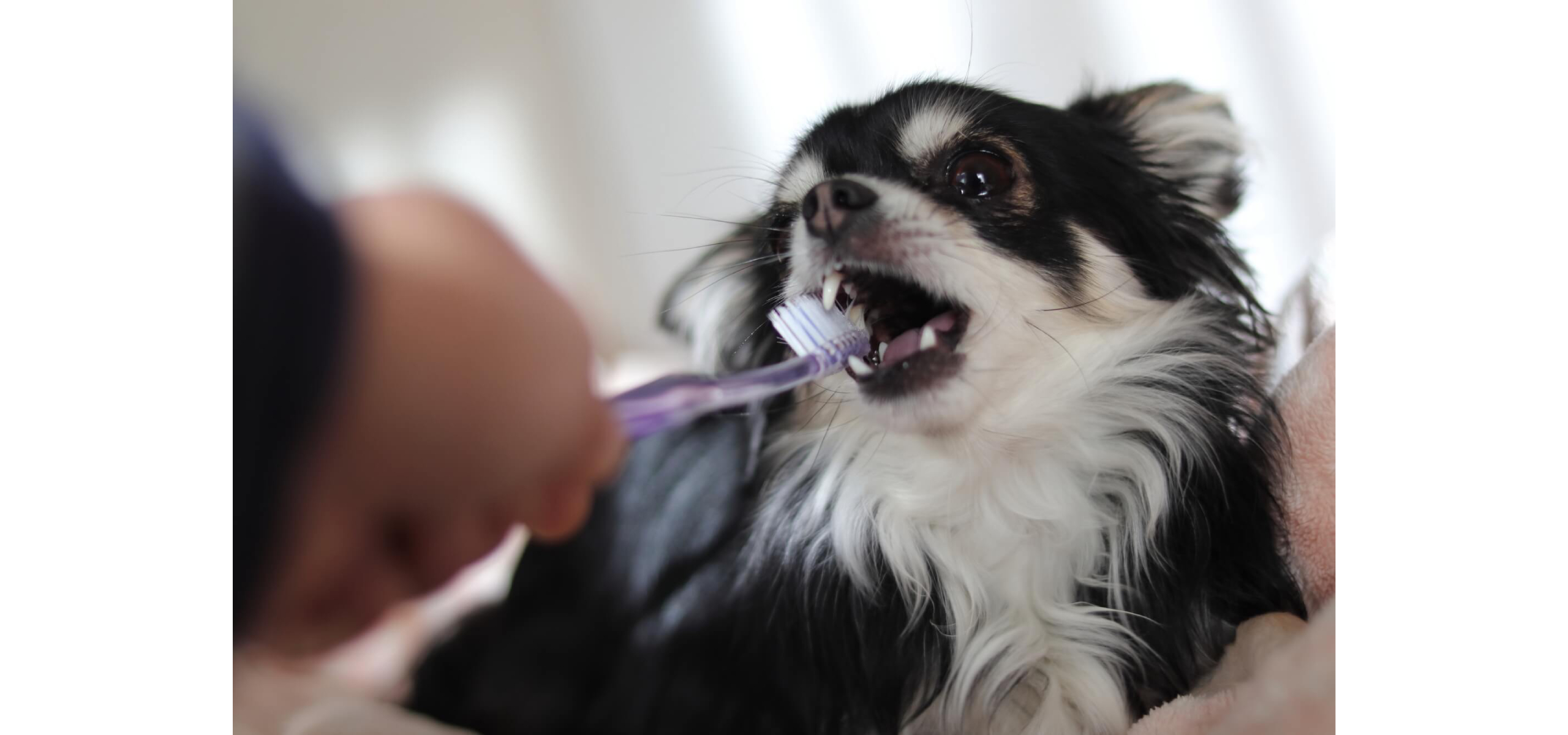
ワンちゃんへの歯磨きは、口臭予防に加え、歯周病を防ぐ上で非常に大切です。
歯周病とは、歯に溜まった歯垢や歯垢が硬くなった歯石が原因となり、歯肉炎や歯周炎になる病気です。歯周病を放置すると、歯肉や歯槽骨が溶け、歯が抜け落ちてしまいます。
また、歯周病菌が全身に回ると腎臓や肝臓、心臓などの臓器に異常をきたす可能性があるほか、関節や骨髄などに疾患を引き起こすこともあります。ワンちゃんの口腔内を健康に保ち、歯周病を防ぐことは、ワンちゃんの全身の健康を守ることでもあるのです。
人間では、歯周病と全身疾患の関わりが広く周知され、歯科衛生士による「プロケア」と毎日の歯磨きによる「セルフケア」の重要性がクローズアップされるようになりました。しかし、人間と違ってワンちゃんは自分で歯医者さんに行くことも、歯磨きをすることもできません。加えて、ワンちゃんの口腔内はアルカリ性で、口腔内が酸性の人間よりも歯周病菌が繁殖しやすい環境です。
こうしたことから、3歳以上のワンちゃんの8割以上が歯周病、あるいはその予備軍であるといわれています。
そのため、ワンちゃんの口腔内を健康に保つには、飼い主さんによるデンタルケア習慣が重要となります。
子犬にも歯磨きは必要?
歯周病リスクは年齢を重ねるほど高まりますが、若くても発症する病気で子犬だから大丈夫という訳ではありません。子犬のうちから歯磨きに慣れておくことで、歯周病リスクを軽減できるだけでなく、ワンちゃんの健康寿命を延ばすことにも繋がります。
歯周病は、一度発症してしまうと完治が難しい病気です。歯周病にならないためにも適切なデンタルケアをできるだけ早く始めましょう。
ワンちゃんへの歯磨きの頻度は?
歯磨きを始める前に、口の中をさわられるのに慣れさせることが大切
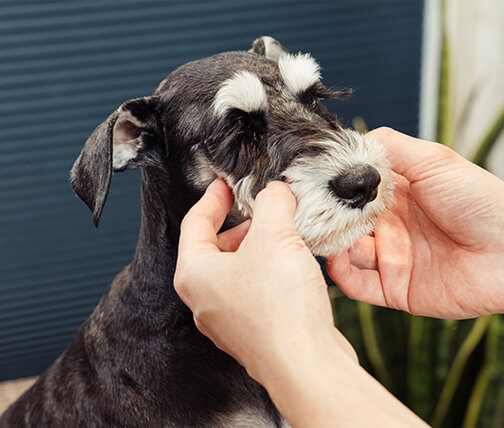
ワンちゃんの口にいきなり手や歯ブラシを入れると、びっくりして口を触られることや歯磨きが嫌になってしまいます。そうなると次回以降の歯磨きが難しくなり、きちんとデンタルケアができなくなる可能性があります。
そのため、歯磨きを始める前に、ワンちゃんが口や歯を触られることに慣れてもらいましょう。ワンちゃんがリラックスできるよう、遊びのつもりで向き合いながら、なでたりタッチしたりして、少しずつ口周りを触る時間を延ばします。口周りを優しくつかんでも嫌がらなければ、唇をそっとめくって指の腹で歯や歯ぐき、奥歯にも触れていきます。正面から手を出されるのを怖がる子には、耳の前や横から手を出してみてください。
併せて、歯ブラシにも慣れてもらうことが大切。歯ブラシの匂いをかがせたりじゃれつかせたりして、危険な物ではないことを知ってもらいましょう。慣れてきたら歯ブラシで口の外側を触ったり、唇をめくって歯や歯ぐきにタッチしてみましょう。
【レベル別】ワンちゃんへのデンタルケア・歯磨きの方法
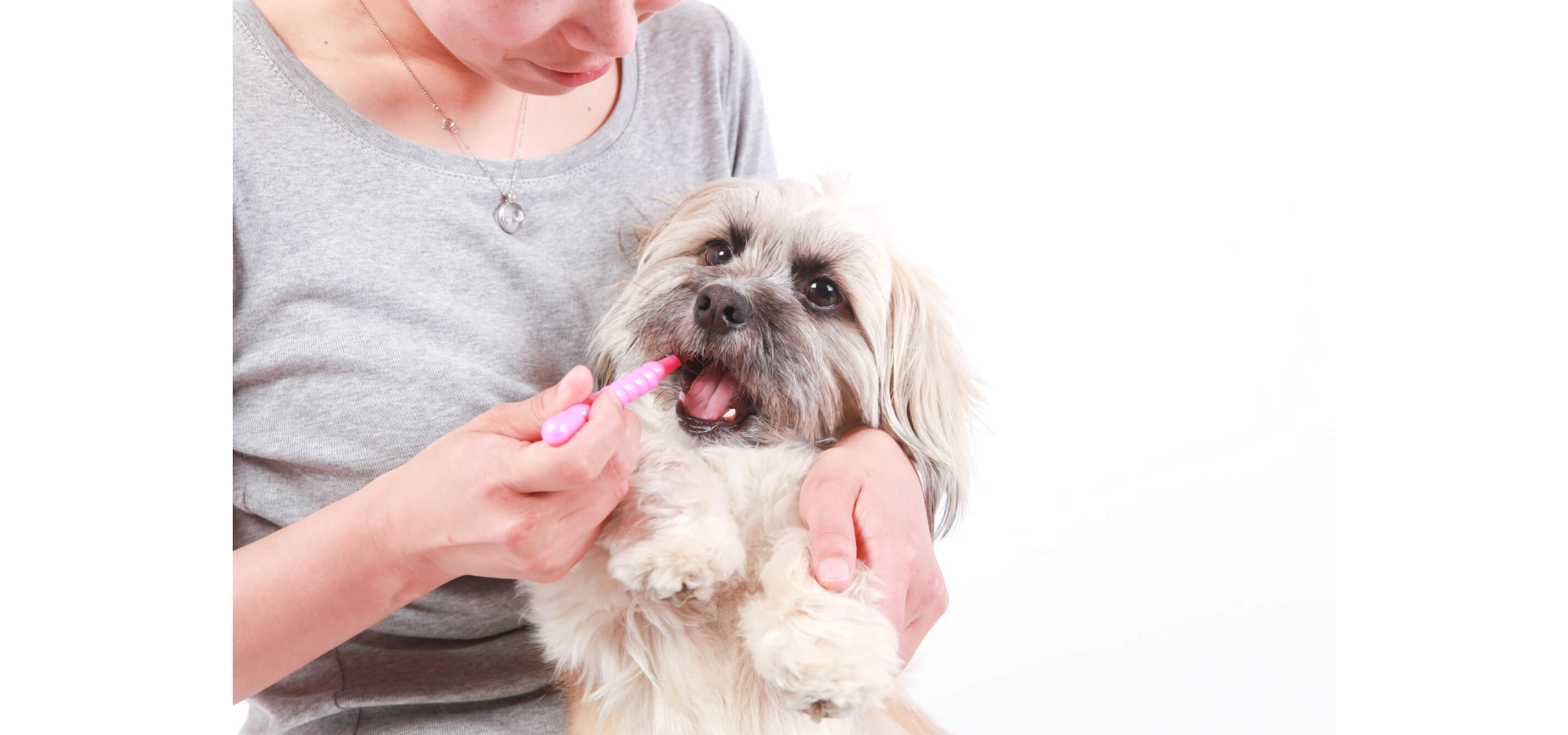
ワンちゃんに初めて歯磨きをする場合や、過去にトライして嫌がられたことがある場合は、歯磨き以外のデンタルケアグッズから歯磨きへと移行していくといいでしょう。
ここでは、最終的に歯磨きができるようにステップアップするための、レベル別のデンタルケアの方法を解説していきます。
【レベル1】デンタルおやつを使う
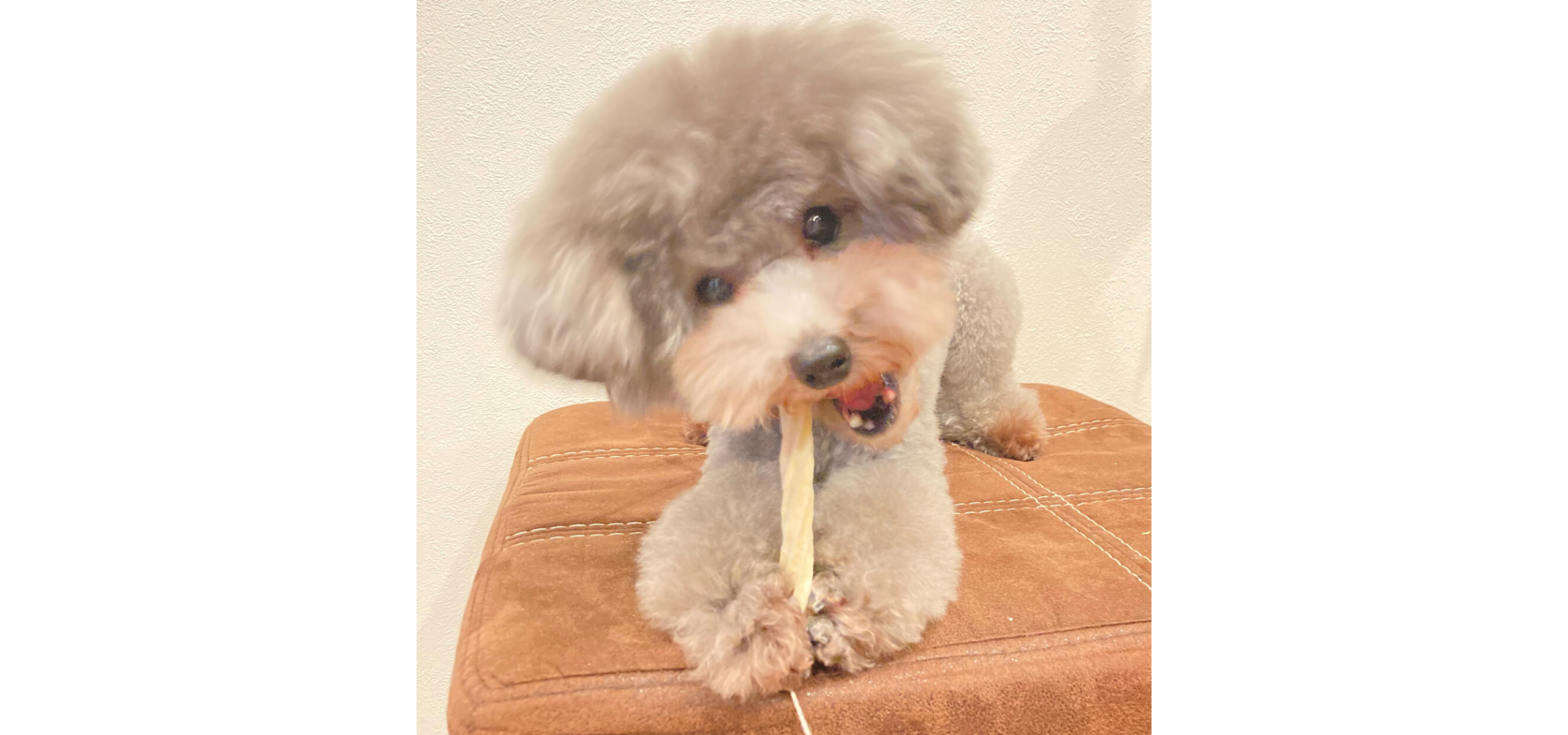
歯磨きガムなどのデンタルおやつは、最も手軽に始めやすいデンタルケア方法です。
噛むことで歯の間に入り込んで歯垢の除去や、口の中の汚れを落として口臭を抑える効果等があります。硬さや大きさのバリエーションの他にも、乳酸菌入りで免疫ケアもできるもの、穀物不使用でアレルギーに配慮したものなど、さまざまな種類があるので、ワンちゃんの年齢や好みに合わせて選んでみてください。毎食後のおやつとしてデンタルおやつを与えるのも良いかもしれません。
ただ、デンタルおやつだけでは口の中全体の汚れは落とせません。歯磨きと合わせてデンタルケアできるようにしましょう。また、食べ方や習性によってはのどに詰まらせることもあります。与えっぱなしにせず、目の届く範囲でお与え下さい。
【レベル2】デンタルおもちゃを使う
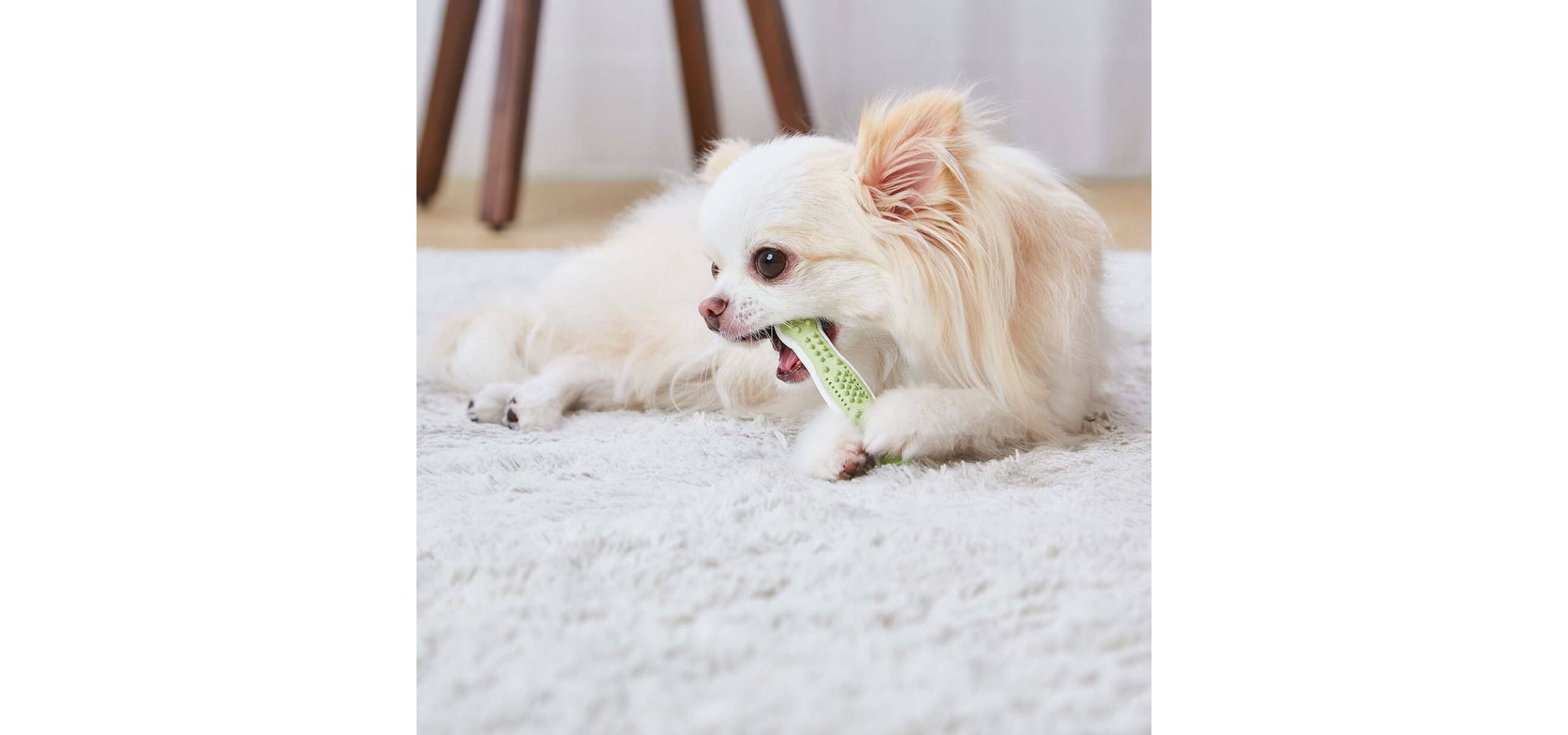
次は、デンタルケアができるおもちゃにチャレンジしてみましょう。
デンタルおやつは低カロリーなものが多いですが、与えすぎるとフードの調整などの工夫も必要になってきます。その点、デンタルおもちゃなら、楽しく遊ぶだけでデンタルケアできるので、歯磨きが苦手な子でもストレスなくトライできます。
ただし、デンタルおもちゃもデンタルおやつと同様、歯垢の抑制や毎日の歯磨き時間の短縮につながる補助的なグッズです。歯磨きと合わせてデンタルケアできるようにしましょう。
【レベル3】歯ブラシや歯磨きシートを使って歯磨きをする
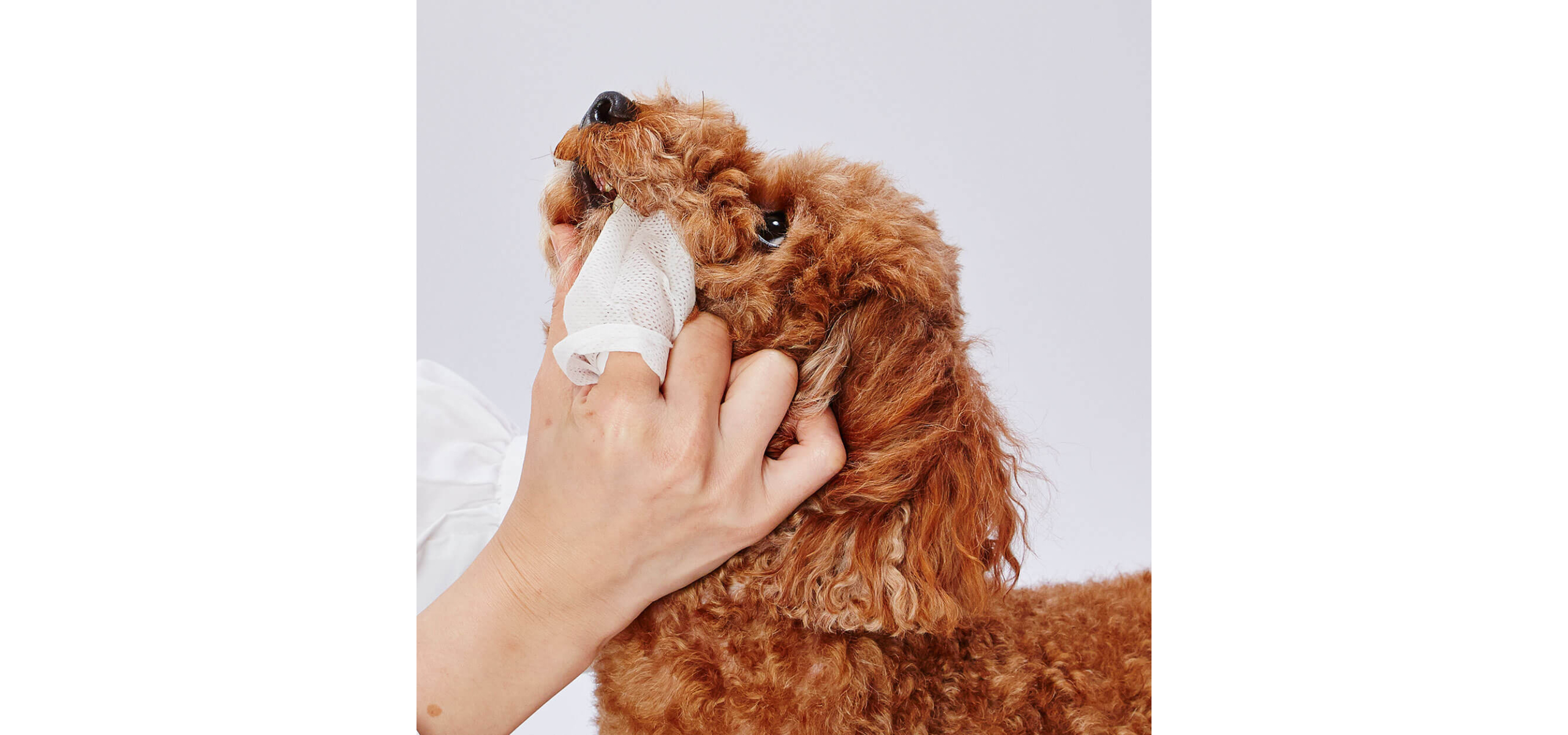
デンタルおやつ・デンタルおもちゃの次は、いよいよ歯磨きです。
いきなり歯ブラシをあてることに不安がある場合は、指に巻いて使う歯磨きシートから始めても構いません。飼い主さんの指で直接歯をさわりながら汚れを落とせるため、ワンちゃんが歯ブラシよりも怖がらずに歯磨きできます。
以下、歯ブラシや歯磨きシートでの磨き方を3ステップで解説します。
・ステップ1:犬歯から磨く
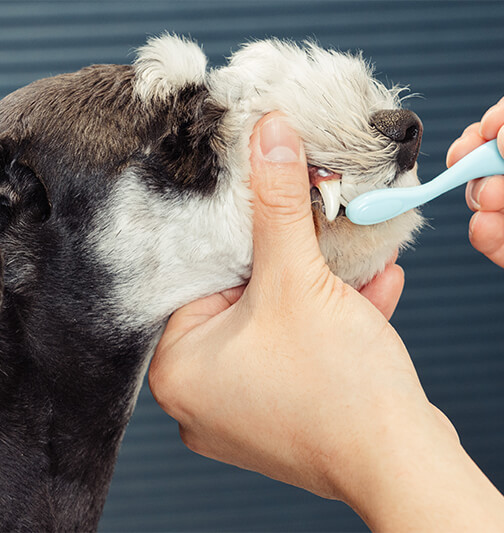
一番大きくて丈夫な犬歯から磨き始めると、飼い主さんは磨きやすく、ワンちゃんにはあまり負担がかかりません。歯周病が進みやすい前歯は、大人のワンちゃんだと嫌がることもあるため、徐々に慣らしていきましょう。
・ステップ2:奥歯を磨く
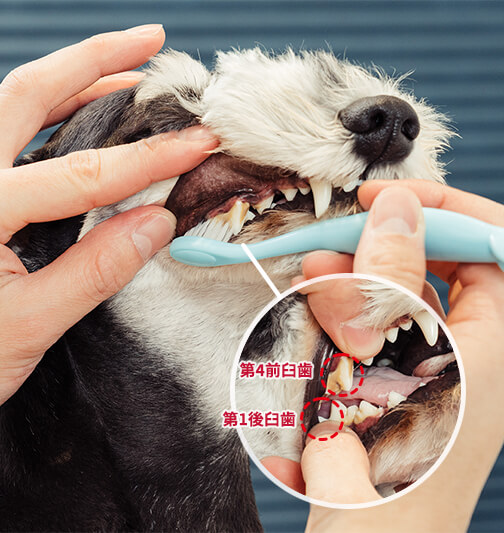
あごを抑えながら上唇をめくり、奥歯を少しずつ磨き進めます。上あごの第4前臼歯(一番奥にある、つながってみえる奥歯)は、特に歯垢や歯石が付きやすいため、よく注意して磨きましょう。
上あごの第4前臼歯に隠れている下あごの第1後臼歯(一番奥にある小さい歯)も忘れずに磨いてください。
・ステップ3:歯の内側を磨く
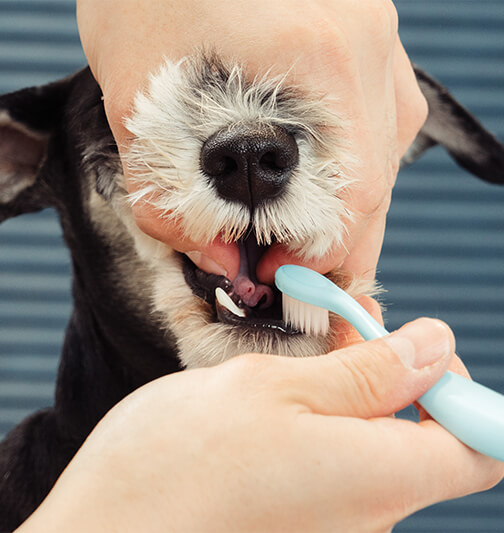
上あごを優しく持ち上げながら、歯ブラシを持つ手で下あごを抑えて口を開かせます。そのまま上の歯の裏側を磨きましょう。
After brushing from the front to the back, continue brushing the lower teeth.歯と歯ぐきのあいだを磨くときは、歯ブラシを45度の角度でやさしくあて、汚れをかきだすようにします。
ワンちゃんへの歯磨きで知っておきたいポイント
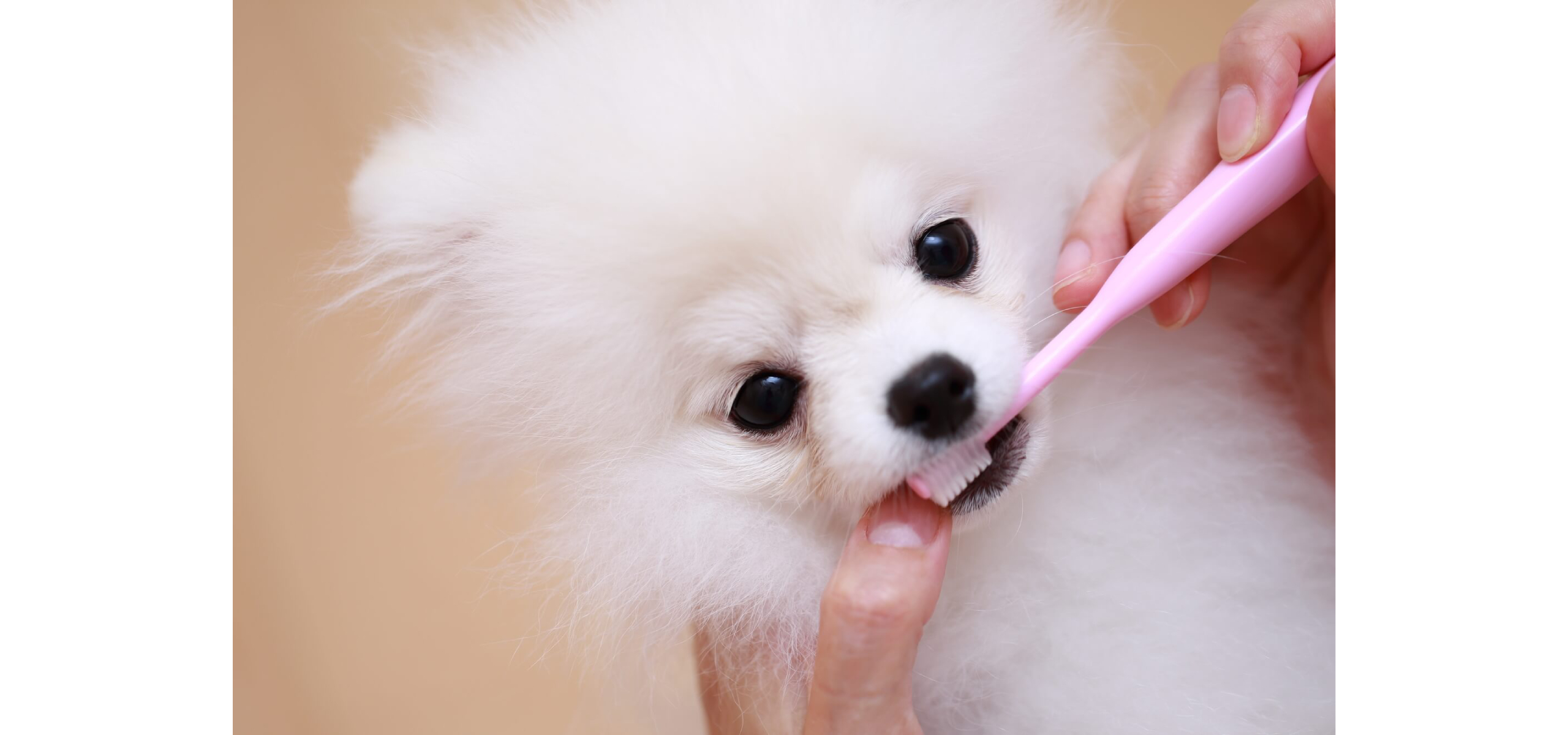
1度でも「歯磨きは怖い・痛い」というイメージを持ったワンちゃんは、歯磨きを嫌がるようになります。
ここでは、ワンちゃんが歯磨きを嫌いにならないために知っておきたいポイントを4つ紹介します。
歯磨きが終わったら褒める
少しの時間でも上手に歯磨きをすることができたら、ワンちゃんを褒めてあげましょう。歯磨きガムなどのおやつをあげるのも効果的です。「いい子で歯磨きをすると、飼い主さんに褒めてもらえる」「大好きなおやつがもらえる!」といったプラスのイメージと歯磨きを結びつけることで、ワンちゃんの歯磨きへの抵抗を減らしていきます。
歯磨きは力を入れすぎない
ワンちゃんの歯を磨くときは、自分の歯を磨く力の10分の1くらいの感覚でやさしく磨いてあげましょう。奥歯や、歯と歯ぐきの間は汚れやすいので重点的に磨きたいところですが、最初は嫌がるワンちゃんが多いかもしれません。
ワンちゃんが嫌がっているのに力を入れてゴシゴシ磨くと、次回以降の歯磨きが大変になる上、歯ぐきの後退にもつながってしまいます。今日は右側、明日は左側、というように歯磨きをする箇所を日によって分けて、1日の歯磨き時間を短くするのもオススメです。
犬用の歯ブラシを使う
必ず犬用の歯ブラシで歯磨きしましょう。
子ども用だとしても人間用の歯ブラシだとヘッドの大きさやブラシの硬さが合わず、歯磨き自体を嫌がってしまう事があります。
歯石がついたら動物病院で治療してもらう
歯石がつく前に自宅でケアをするのがベストですが、磨ききれていない部分や磨きにくい部分には歯石がついてしまうこともあります。歯石に気づいたら、動物病院で取り除いてもらいましょう。
Also,どれだけ工夫をしても歯磨きを嫌がるようであれば、無理強いはせず動物病院に診てもらうことをオススメします。
ワンちゃんのデンタルケアにオススメ商品
-
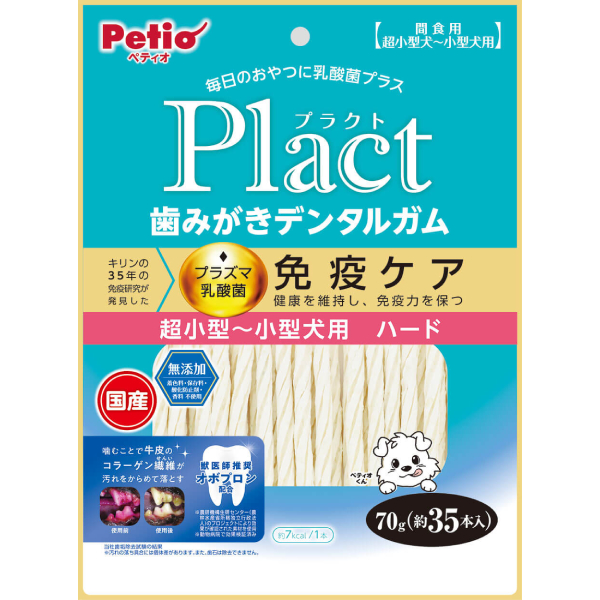 Pract toothpaste dental gum「プラズマ乳酸菌」配合で、免疫ケアとデンタルケアが同時にできる歯磨きおやつ。牛皮のコラーゲン繊維が噛むことで汚れをからめ落とします。毎日のおやつで免疫力アップ&デンタルケア習慣の定着を目指しましょう。
Pract toothpaste dental gum「プラズマ乳酸菌」配合で、免疫ケアとデンタルケアが同時にできる歯磨きおやつ。牛皮のコラーゲン繊維が噛むことで汚れをからめ落とします。毎日のおやつで免疫力アップ&デンタルケア習慣の定着を目指しましょう。 -
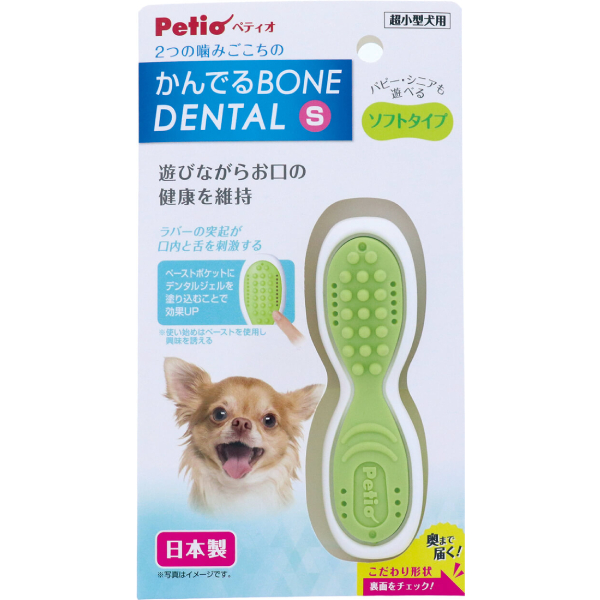 Kanderu DENTAL遊びながら噛むことでお口の健康維持ができる国産のデンタルおもちゃ。ソフトとハード、2つの噛み心地があり、飽きずに遊べます。形状はボーンタイプ・リングタイプの2種類。イチゴやベーコンのフレーバーもあり、豊富なラインアップ。
Kanderu DENTAL遊びながら噛むことでお口の健康維持ができる国産のデンタルおもちゃ。ソフトとハード、2つの噛み心地があり、飽きずに遊べます。形状はボーンタイプ・リングタイプの2種類。イチゴやベーコンのフレーバーもあり、豊富なラインアップ。 -
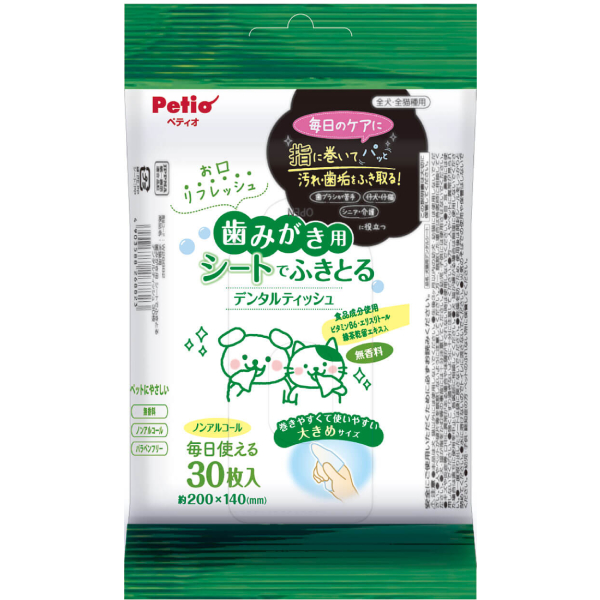 シートでふきとる デンタルティッシュ歯の汚れを優しく拭き取れるデンタルティッシュ。緑茶乾留エキス配合でお口もスッキリします。歯磨きが苦手な子のほか、子犬・シニアにもオススメ。手に巻いて使いやすい大きめサイズで、自然由来成分配合だからなめてしまっても安心です。
シートでふきとる デンタルティッシュ歯の汚れを優しく拭き取れるデンタルティッシュ。緑茶乾留エキス配合でお口もスッキリします。歯磨きが苦手な子のほか、子犬・シニアにもオススメ。手に巻いて使いやすい大きめサイズで、自然由来成分配合だからなめてしまっても安心です。
ワンちゃんの歯周病予防のため、歯磨きを習慣化しよう
Frequently Asked Questions
犬の歯磨きQ&A
- ワンちゃんへの歯磨きの頻度は?
-
毎日の歯磨きが理想ですが、嫌がる場合は3日に1度、もしくは3日かけて全体を磨く意識を持ちましょう。
- ワンちゃんへの歯磨きを始める前にしておかなければならないことと?
-
いきなり歯ブラシを口に入れられると、ワンちゃんは驚いてしまいます。1度恐怖心が根付くと次回からの歯磨きのハードルが上がるため、口や歯を触られることに慣れてもらうことから始めましょう。
- ワンちゃんへの歯磨きの方法は?
-
比較的取り組みやすいのがデンタルおやつ・デンタルおもちゃを使ったケア。慣れてくると歯ブラシや歯磨きシートを使った歯磨きです。ワンちゃんの様子を見ながら歯磨きしてあげましょう。
Special feature that you want to check together
-
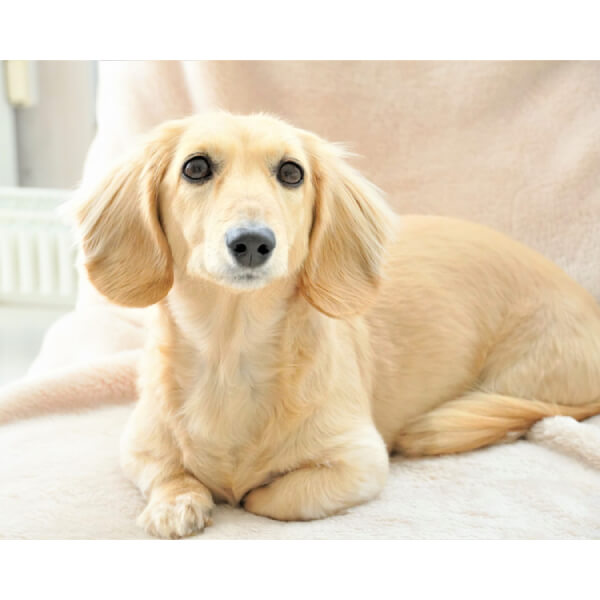 What are the signs of illness in dogs? Checkpoints when you are not feeling well
What are the signs of illness in dogs? Checkpoints when you are not feeling well -
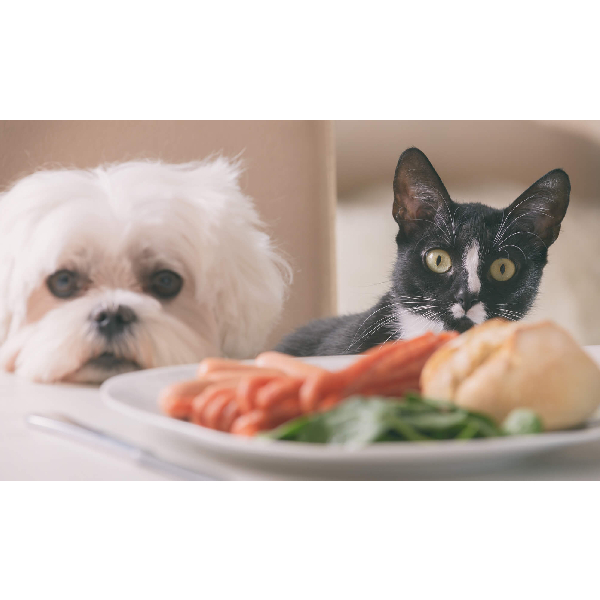 Risk of accidental ingestion by cats and dogs Things to be aware of to protect pets
Risk of accidental ingestion by cats and dogs Things to be aware of to protect pets -
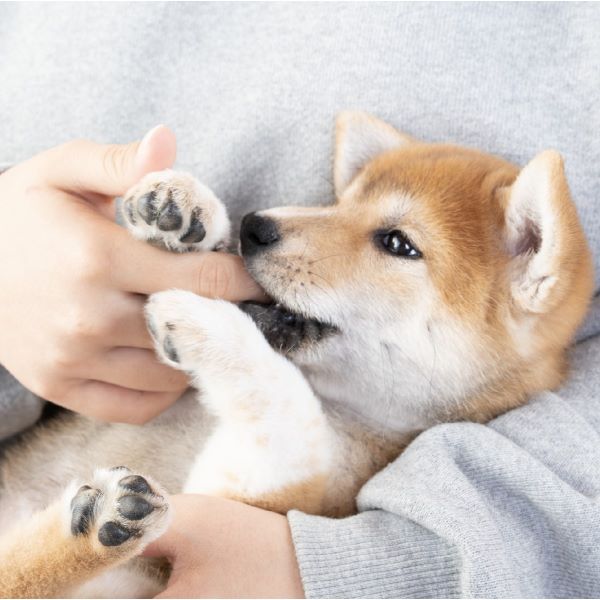 How do you prepare for your first puppy? Also explains how to raise the animal, how to keep it in mind, etc.
How do you prepare for your first puppy? Also explains how to raise the animal, how to keep it in mind, etc. -
 How should I train my dog? Explanation of basic items and precautions
How should I train my dog? Explanation of basic items and precautions





























 Category
Category Category
Category Category
Category
